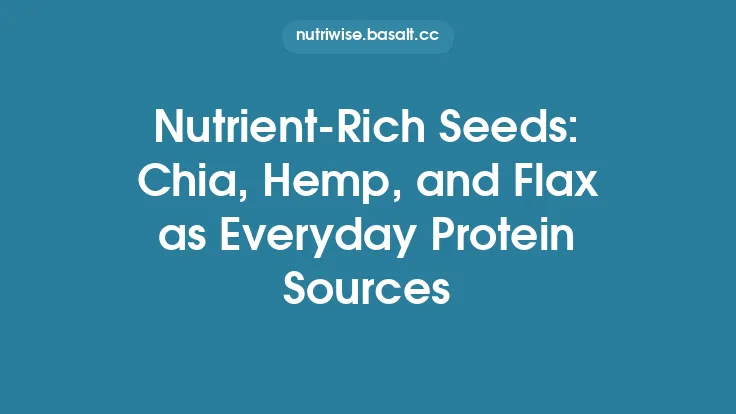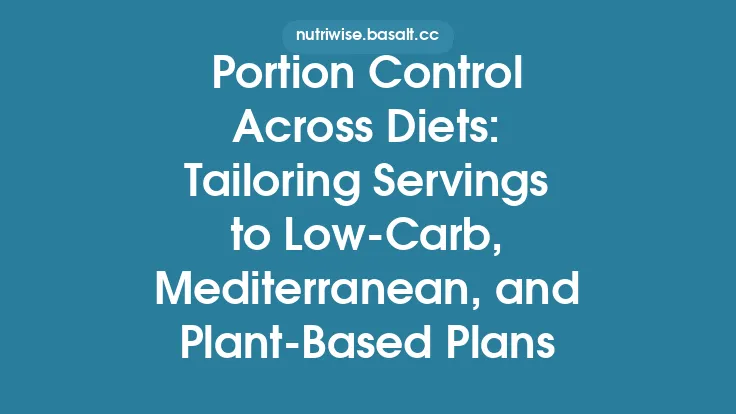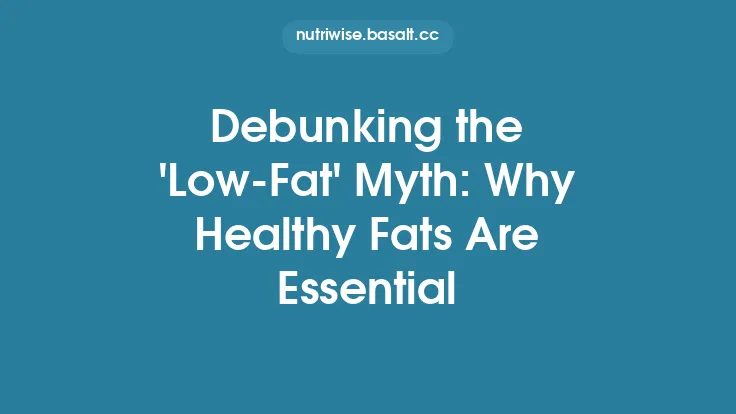The modern diet often paints fat as the villain, yet a growing body of scientific evidence underscores that the type and quality of fat you consume are pivotal for heart health, brain function, hormone balance, and overall well‑being. When you choose foods that are naturally rich in unsaturated fats—especially monounsaturated (MUFA) and polyunsaturated (PUFA) varieties—you supply your body with essential fatty acids, fat‑soluble vitamins, and bioactive compounds that support cellular integrity and metabolic resilience. This article walks you through the most nutrient‑dense plant‑based fat sources, from the buttery flesh of avocado to the crunchy diversity of nuts and the tiny powerhouses of seeds, explaining what makes each one special, how their fatty‑acid profiles differ, and practical ways to weave them into everyday meals.
Understanding the Types of Dietary Fats
Before diving into specific foods, it helps to clarify the basic categories of dietary fat:
| Fat Type | Chemical Structure | Typical Food Sources | Health Implications |
|---|---|---|---|
| Saturated Fat | No double bonds; straight chain | Coconut oil, butter, palm oil | Can raise LDL‑cholesterol when consumed in excess; some recent data suggest the impact varies with food matrix |
| Monounsaturated Fat (MUFA) | One double bond; kinked chain | Avocado, olive oil, almonds, peanuts | Lowers LDL‑cholesterol, may raise HDL‑cholesterol, improves insulin sensitivity |
| Polyunsaturated Fat (PUFA) | Two or more double bonds; includes essential fatty acids | Walnuts, flaxseed, chia seeds, sunflower seeds | Provides omega‑3 (α‑linolenic acid, ALA) and omega‑6 (linoleic acid, LA) essential for cell membranes, eicosanoid synthesis, and anti‑inflammatory pathways |
| Trans Fat | Unsaturated fat with a trans double bond (often industrial) | Partially hydrogenated oils (largely removed from food supply) | Strongly associated with increased cardiovascular risk; should be avoided |
The human body cannot synthesize the essential fatty acids ALA (omega‑3) and LA (omega‑6); they must be obtained from the diet. The ideal dietary ratio of omega‑6 to omega‑3 is still debated, but most nutritionists recommend aiming for a ratio between 4:1 and 1:1 to support anti‑inflammatory balance. Plant‑based fat sources excel at delivering both essential fatty acids and a spectrum of non‑essential but beneficial unsaturated fats.
Avocado: A Creamy Source of Monounsaturated Fat
Nutrient Profile (per 100 g fresh avocado)
- Calories: 160 kcal
- Total Fat: 14.7 g (≈ 10 g MUFA, 2 g PUFA, 2 g saturated)
- Fiber: 6.7 g
- Potassium: 485 mg (≈ 14 % DV)
- Vitamin E: 2.1 mg (≈ 14 % DV)
Avocado’s hallmark is its high content of oleic acid, the same MUFA that dominates olive oil. Oleic acid has been shown to favorably modulate LDL particle size, shifting the profile toward larger, less atherogenic particles. Moreover, the fruit’s creamy matrix is rich in phytosterols (especially β‑sitosterol), which compete with cholesterol for intestinal absorption, modestly lowering serum cholesterol levels.
Why Avocado Stands Out
- Low Oxidative Susceptibility: The high antioxidant content (vitamin E, lutein, and carotenoids) protects its unsaturated fats from oxidation, preserving nutritional quality even when stored at refrigerator temperatures.
- Versatile Culinary Uses: From sliced toppings on salads to blended bases for smoothies and dressings, avocado’s mild flavor integrates seamlessly into both sweet and savory dishes.
- Satiety Boost: The combination of fiber and fat slows gastric emptying, promoting prolonged fullness—a useful attribute for weight‑management strategies.
Practical Tip: To maximize nutrient absorption, pair avocado with a source of vitamin C (e.g., citrus juice or tomatoes). Vitamin C enhances the bioavailability of fat‑soluble antioxidants like lutein.
Olive Oil and Its Derivatives
While not a whole food in the same sense as avocado, extra‑virgin olive oil (EVOO) is a cornerstone of Mediterranean dietary patterns and deserves mention alongside other plant‑based fats.
Key Characteristics
- Fat Composition (per 100 g): ~73 % MUFA (primarily oleic acid), ~11 % PUFA (linoleic acid), ~14 % saturated.
- Phenolic Content: EVOO contains hydroxytyrosol, oleuropein, and other polyphenols that exhibit potent anti‑oxidative and anti‑inflammatory actions.
- Smoke Point: Approximately 190‑210 °C (375‑410 °F) for high‑quality EVOO, making it suitable for low‑to‑medium‑heat cooking and ideal for dressings.
Health Highlights
- Endothelial Function: Regular EVOO consumption improves endothelial nitric oxide production, supporting vascular health.
- Gut Microbiome: Polyphenols in EVOO act as prebiotics, fostering beneficial bacterial strains such as *Lactobacillus and Bifidobacterium*.
Culinary Integration
- Drizzle over roasted vegetables just before serving.
- Use as the base for a classic vinaigrette (1 part vinegar, 3 parts EVOO, mustard, herbs).
- Replace butter in sautéing to reduce saturated fat intake while preserving flavor.
Nuts: Nutrient‑Dense Powerhouses
Nuts are compact, shelf‑stable sources of unsaturated fats, protein, fiber, and a suite of micronutrients. Below is a snapshot of the most common varieties.
| Nut | Total Fat (g/28 g serving) | MUFA (g) | PUFA (g) | Notable Micronutrients |
|---|---|---|---|---|
| Almonds | 14 | 9 | 3.5 | Vitamin E (37 % DV), magnesium (20 % DV) |
| Walnuts | 18 | 2.5 | 13 | Alpha‑linolenic acid (2.5 g), manganese (45 % DV) |
| Pistachios | 13 | 7 | 4 | Vitamin B6 (25 % DV), potassium (290 mg) |
| Cashews | 12 | 8 | 2 | Copper (30 % DV), zinc (10 % DV) |
| Brazil nuts | 19 | 7 | 6 | Selenium (up to 1000 % DV) |
Key Fatty‑Acid Highlights
- Almonds & Cashews: Predominantly MUFA (oleic acid) with modest PUFA, making them heart‑friendly and stable for raw consumption.
- Walnuts: The standout for omega‑3 ALA, providing roughly 2.5 g per ounce—more than any other nut. This contributes to anti‑inflammatory pathways and may support cognitive health.
- Pistachios: Offer a balanced MUFA/PUFA ratio and contain lutein and zeaxanthin, carotenoids beneficial for eye health.
Bioactive Compounds
- Phytosterols: All nuts contain β‑sitosterol, which can lower LDL‑cholesterol by up to 5 % when consumed regularly.
- Polyphenols: Particularly abundant in almonds and pistachios, these antioxidants mitigate oxidative stress.
Storage & Shelf Life
Because nuts are high in unsaturated fats, they are prone to oxidation. Store them in airtight containers in a cool, dark place; for longer storage (beyond 3 months), keep them in the refrigerator or freezer to preserve freshness.
Seeds: Tiny Packages of Healthy Fat
Seeds often receive less culinary fanfare than nuts, yet they pack a remarkable concentration of essential fatty acids, fiber, and micronutrients.
| Seed | Total Fat (g/28 g) | MUFA (g) | PUFA (g) | Dominant Fatty Acid | Notable Micronutrients |
|---|---|---|---|---|---|
| Flaxseed | 12 | 2 | 9 | ALA (omega‑3) | Lignans (phytoestrogens), thiamine |
| Chia Seeds | 9 | 1 | 7 | ALA (omega‑3) | Calcium (18 % DV), magnesium |
| Hemp Seeds | 14 | 2 | 11 | Gamma‑linolenic acid (GLA, omega‑6) | Vitamin E, zinc |
| Pumpkin Seeds | 13 | 4 | 6 | Linoleic acid (omega‑6) | Iron (15 % DV), magnesium |
| Sunflower Seeds | 14 | 5 | 7 | Linoleic acid (omega‑6) | Vitamin E (35 % DV), selenium |
Why Seeds Matter
- Omega‑3 Richness: Flax and chia are among the richest plant sources of ALA, a precursor to the long‑chain omega‑3s EPA and DHA (though conversion rates are modest, they still contribute to overall omega‑3 intake).
- Gamma‑Linolenic Acid (GLA): Hemp seeds provide GLA, a less common omega‑6 fatty acid that exhibits anti‑inflammatory properties distinct from linoleic acid.
- Fiber Boost: Both flax and chia form a gel‑like matrix when hydrated, delivering soluble fiber that can aid glycemic control and promote satiety.
Culinary Applications
- Ground Flaxseed: Sprinkle on oatmeal, blend into smoothies, or incorporate into baked goods for a nutty flavor and extra omega‑3s.
- Chia Pudding: Mix 3 Tbsp chia seeds with 1 cup plant‑based milk, let sit 15‑20 minutes, then sweeten with fruit.
- Hemp Seed Topping: Add a tablespoon to salads, yogurt, or grain bowls for a mild, nutty crunch.
- Pumpkin & Sunflower Seeds: Roast lightly with a pinch of sea salt for snackable toppings on soups and salads.
Balancing Fatty‑Acid Ratios for Optimal Health
While each food offers a unique fatty‑acid signature, the overall dietary pattern determines health outcomes. Here are evidence‑based guidelines to help you achieve a balanced intake:
- Prioritize Unsaturated Over Saturated Fat
Aim for at least 70 % of total fat intake to come from MUFA and PUFA sources. Replace butter or lard with avocado, olive oil, or nut‑based spreads.
- Target an Omega‑6:Omega‑3 Ratio of 4:1–1:1
- Increase omega‑3: Incorporate flaxseed, chia, walnuts, and hemp seeds daily.
- Moderate omega‑6: While omega‑6 is essential, excessive intake (common with refined vegetable oils) can tilt the balance toward pro‑inflammatory eicosanoids. Use olive oil and nut oils (e.g., almond oil) as primary cooking fats.
- Mind Portion Sizes
Because nuts and seeds are calorie‑dense, a typical serving is about 1 oz (≈ 28 g) or 2 Tbsp for seeds. This provides roughly 150‑200 kcal and a healthy dose of unsaturated fat without excess energy.
- Consider Whole‑Food Matrices
The health impact of fats is amplified when delivered within whole foods that also contain fiber, antioxidants, and micronutrients. For example, the synergistic effect of avocado’s MUFA with its potassium and lutein is more beneficial than isolated oil.
Practical Tips for Incorporating Healthy Fats into Daily Meals
| Meal | Fat‑Rich Addition | How to Prepare |
|---|---|---|
| Breakfast | Sliced avocado on whole‑grain toast | Mash avocado with lemon juice, sprinkle with sea salt and chili flakes. |
| Smoothie | 1 Tbsp ground flaxseed or chia seeds | Blend with berries, spinach, plant‑based milk; let sit 5 min for chia to thicken. |
| Salad | Handful of mixed nuts & seeds + drizzle of EVOO | Toss greens with toasted almonds, pumpkin seeds, and a vinaigrette of 2 Tbsp EVOO + balsamic vinegar. |
| Snack | Nut butter (almond or cashew) on apple slices | Choose natural, unsweetened nut butter; pair with a piece of fruit for fiber. |
| Main Dish | Walnut‑crusted tofu or tempeh | Press nuts finely, coat tofu, bake at 375 °F for 20 min; serve with sautéed veggies in a splash of olive oil. |
| Dessert | Dark chocolate (≥ 70 % cacao) with hazelnuts | Melt chocolate, dip hazelnuts, cool on parchment; portion to 1‑2 squares. |
Cooking Considerations
- Heat Stability: MUFA‑rich oils (olive, avocado) tolerate moderate heat; avoid prolonged high‑temperature frying to prevent oxidation.
- Avoid Re‑heating: Repeatedly heating the same oil accelerates formation of harmful aldehydes. Use fresh oil for each cooking session.
- Combine with Antioxidants: Adding herbs (rosemary, thyme) or spices (turmeric, black pepper) during cooking can further protect unsaturated fats from oxidative damage.
Potential Pitfalls and How to Avoid Them
| Pitfall | Why It Matters | Mitigation Strategy |
|---|---|---|
| Overconsumption of Calories | Nuts and seeds are energy‑dense; excess intake can lead to weight gain. | Stick to measured servings (1 oz nuts, 2 Tbsp seeds) and balance with lower‑calorie foods like vegetables. |
| Oxidized Fats | Oxidation produces free radicals that can damage cells. | Store nuts/seeds in airtight containers, keep them cool, and consume within 3–6 months of opening. |
| Allergies | Tree‑nut and seed allergies are common. | Substitute with tolerated alternatives (e.g., pumpkin seeds for nut‑allergic individuals). |
| Excess Omega‑6 Intake | High omega‑6 without adequate omega‑3 can promote inflammation. | Prioritize omega‑3‑rich seeds (flax, chia) and limit reliance on high‑omega‑6 oils like corn or soybean oil. |
| Misinformation About “Low‑Fat” | Some “low‑fat” processed foods replace fat with refined carbs, undermining satiety and nutrient density. | Choose whole‑food sources of healthy fats rather than processed “fat‑free” alternatives. |
Embracing Healthy Fat Sources for Long‑Term Wellness
Integrating avocado, olive oil, nuts, and seeds into your daily routine is less about a single “superfood” and more about cultivating a dietary pattern rich in unsaturated fats, fiber, and phytonutrients. By understanding each food’s fatty‑acid composition, antioxidant capacity, and culinary versatility, you can design meals that support cardiovascular health, cognitive function, and metabolic balance—all while enjoying diverse flavors and textures.
Remember, the goal isn’t to eliminate fat but to prioritize the right kinds. When you consistently choose these plant‑based fat sources, you lay a foundation for sustained health that endures beyond the latest diet trend.





